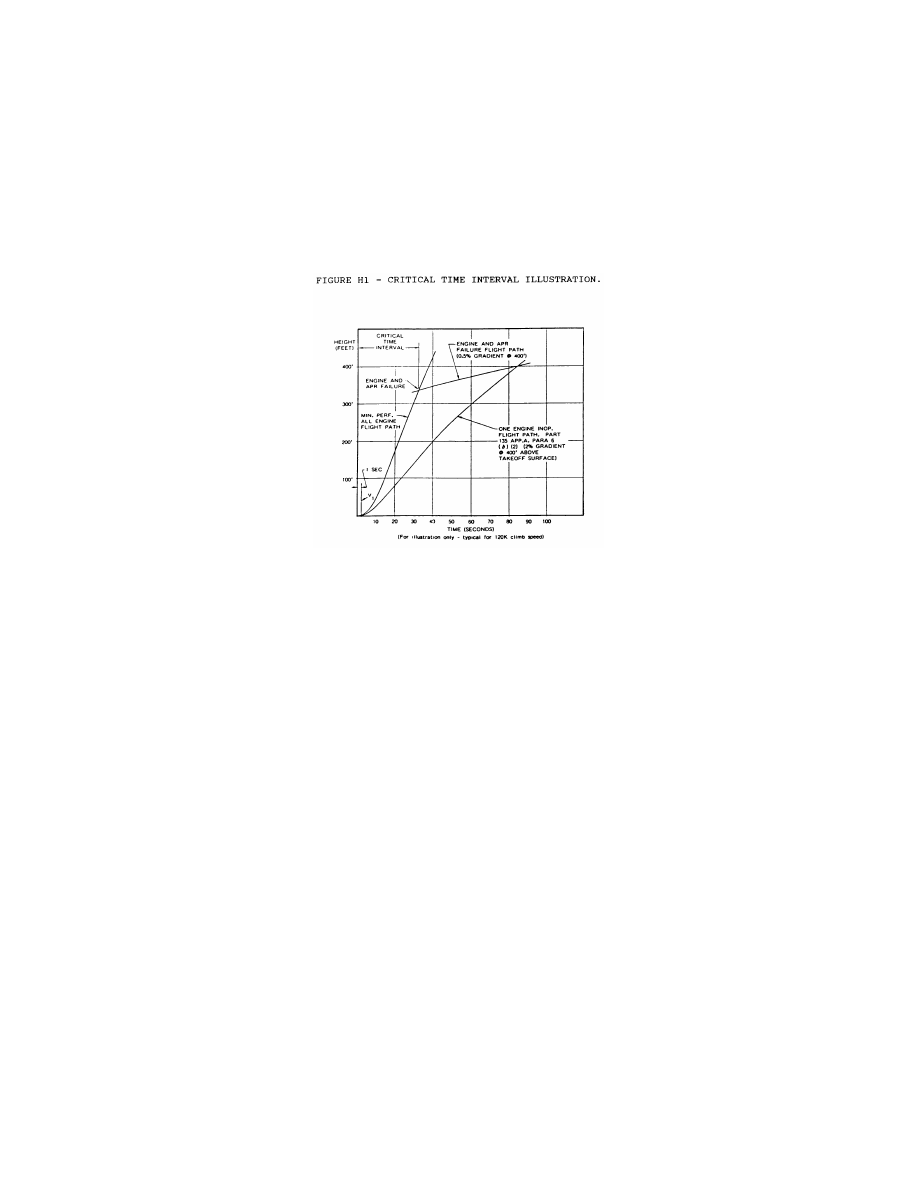
356
14 CFR Ch. I (1–1–14 Edition)
Pt. 23, App. H
H23.3,
Reliability and performance require-
ments.
(a) It must be shown that, during the crit-
ical time interval, an APR failure that in-
creases or does not affect power on either en-
gine will not create a hazard to the airplane,
or it must be shown that such failures are
improbable.
(b) It must be shown that, during the crit-
ical time interval, there are no failure modes
of the APR system that would result in a
failure that will decrease the power on either
engine or it must be shown that such failures
are extremely improbable.
(c) It must be shown that, during the crit-
ical time interval, there will be no failure of
the APR system in combination with an en-
gine failure or it must be shown that such
failures are extremely improbable.
(d) All applicable performance require-
ments must be met with an engine failure
occurring at the most critical point during
takeoff with the APR system functioning
normally.
H23.4,
Power setting.
The selected takeoff power set on each en-
gine at the beginning of the takeoff roll may
not be less than—
(a) The power necessary to attain, at V
1
, 90
percent of the maximum takeoff power ap-
proved for the airplane for the existing con-
ditions;
(b) That required to permit normal oper-
ation of all safety-related systems and equip-
ment that are dependent upon engine power
or power lever position; and
(c) That shown to be free of hazardous en-
gine response characteristics when power is
advanced from the selected takeoff power
level to the maximum approved takeoff
power.
H23.5,
Powerplant controls—general.
(a) In addition to the requirements of
§ 23.1141, no single failure or malfunction (or
probable combination thereof) of the APR,
including associated systems, may cause the
failure of any powerplant function necessary
for safety.
(b) The APR must be designed to—
(1) Provide a means to verify to the flight
crew before takeoff that the APR is in an op-
erating condition to perform its intended
function;
(2) Automatically advance power on the
operating engines following an engine failure
during takeoff to achieve the maximum at-
tainable takeoff power without exceeding en-
gine operating limits;
(3) Prevent deactivation of the APR by
manual adjustment of the power levers fol-
lowing an engine failure;
(4) Provide a means for the flight crew to
deactivate the automatic function. This
means must be designed to prevent inad-
vertent deactivation; and
(5) Allow normal manual decrease or in-
crease in power up to the maximum takeoff
power approved for the airplane under the
existing conditions through the use of power
levers, as stated in § 23.1141(c), except as pro-
vided under paragraph (c) of H23.5 of this ap-
pendix.
(c) For airplanes equipped with limiters
that automatically prevent engine operating
limits from being exceeded, other means
may be used to increase the maximum level
of power controlled by the power levers in
the event of an APR failure. The means must
be located on or forward of the power levers,
must be easily identified and operated under
all operating conditions by a single action of
any pilot with the hand that is normally
VerDate Mar<15>2010
10:12 Mar 18, 2014
Jkt 232046
PO 00000
Frm 00366
Fmt 8010
Sfmt 8002
Y:\SGML\232046.XXX
232046
EC28SE91.030</GPH>
pmangrum on DSK3VPTVN1PROD with CFR